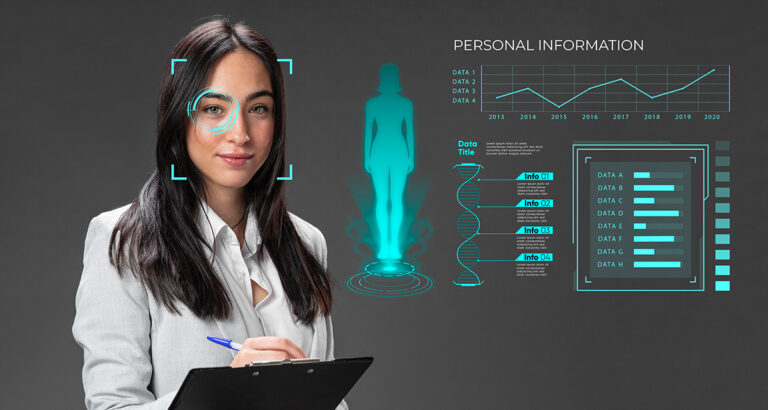In the last two decades, biologic therapies have redefined treatment standards across a spectrum of chronic and life-threatening conditions. From autoimmune diseases and cancers to rare genetic disorders, these targeted therapies have given hope where traditional pharmacology often fell short. Their emergence represents the pinnacle of medical innovation, combining precision, efficacy, and personalized potential, all built from living systems.
Yet, amid this triumph lies a troubling paradox. While biologics are among the most promising interventions in modern medicine, their accessibility remains deeply inequitable. A vast majority of the global population, particularly in low- and middle-income countries, continues to face formidable barriers in receiving these life-altering therapies. Even in high-income nations, systemic challenges such as cost and supply chain limitations create significant disparities in access and continuity of care.
This article explores the multifaceted landscape of biologics accessibility. It places the clinical value of these agents within the context of real-world healthcare systems, with the goal of equipping doctors worldwide to better understand the obstacles, innovations, and responsibilities that surround the use of biologics in everyday practice.
What Makes Biologics Different?
Biologics differ from conventional small-molecule drugs in fundamental ways. Rather than being chemically synthesized, biologics are produced using living cells and involve highly specialized manufacturing processes. Their structures are larger, more intricate, and often highly sensitive to environmental conditions. These features allow biologics to precisely target disease mechanisms, whether by blocking inflammatory cytokines in rheumatoid arthritis or modulating immune checkpoints in cancer.

Clinically, biologics have transformed treatment paradigms. In rheumatology, agents such as adalimumab and etanercept have dramatically reduced disease burden in patients with rheumatoid arthritis. In oncology, monoclonal antibodies like trastuzumab have become standard of care for HER2-positive breast cancer. Similarly, enzyme replacement therapies have opened up possibilities for managing rare genetic disorders that were previously untreatable.
Despite these breakthroughs, the very complexity that makes biologics so effective also contributes to their limited accessibility. This tension between therapeutic potential and practical deployment is one of the defining challenges of contemporary clinical medicine.
The Cost Barrier: Beyond the Price Tag
Although insurance systems vary across countries, cost remains a central barrier to biologic accessibility. Biologic drugs are significantly more expensive to produce than traditional medications. The development pipeline, including research, clinical trials, and regulatory processes, is long and resource-intensive. Manufacturing requires strict environmental controls and specialized facilities, all of which add to the final cost faced by health systems or individual patients.
For many doctors, especially in resource-limited settings, the high cost of biologics presents an ethical and clinical dilemma. Physicians may know which therapy is most effective, yet remain unable to prescribe it due to local unavailability or institutional restrictions. This disconnect between clinical knowledge and actual practice fosters frustration and often forces reliance on second-line therapies.
Beyond individual affordability, the cost of biologics affects national and institutional procurement decisions. Public health programs may choose not to include biologics on essential medicine lists or may apply narrow usage criteria. As a result, even when physicians are informed and prepared to use biologics, structural and economic barriers stand in the way of delivering these treatments.
Infrastructure and Logistical Challenges
Infrastructure plays a pivotal role in biologic accessibility. Unlike oral medications, many biologics require cold-chain logistics, sterile reconstitution, and specific administration techniques such as subcutaneous injection or intravenous infusion. These conditions are not always feasible in rural or under-resourced areas.
In tropical and remote settings, maintaining cold-chain integrity is particularly challenging. Unreliable electricity, poor transport infrastructure, and a lack of proper refrigeration facilities can compromise drug efficacy. A biologic that arrives spoiled due to a lapse in cold-chain logistics is not only ineffective but potentially harmful.
Human resource capacity is another concern. Healthcare professionals may need training in biologic handling, storage, administration, and patient monitoring. Without adequate clinical infrastructure, the introduction of biologics can overburden already stretched systems or result in suboptimal outcomes.
For doctors operating in rural or mobile outreach settings, the practical feasibility of prescribing biologics depends not only on their clinical indication but also on the physical and operational readiness of the healthcare environment.
Regulatory and Policy Considerations
Access to biologics is closely linked to the regulatory frameworks governing drug approval, importation, and local distribution. In many countries, especially those in the Global South, regulatory bodies may be underfunded, understaffed, or lack the infrastructure to expedite approvals. Even after a biologic is approved in high-income countries, several years may pass before it becomes available in other markets.
Regulatory requirements such as local clinical trials or extensive post-marketing surveillance can add further delays or costs, discouraging manufacturers from entering certain regions. Policies that aim to protect patients through safety checks can inadvertently restrict timely access if not well balanced.
Doctors can play a crucial role in advocating for policy reform. Their voices are influential in shaping hospital formularies, informing public health priorities, and raising awareness of access-related inequities. Medical societies and physician networks can push for faster regulatory harmonization and inclusion of biologics in standard treatment protocols.
Biosimilars: A Transformational Opportunity
The emergence of biosimilars represents a turning point in the global conversation around biologic accessibility. Biosimilars are highly similar in quality, efficacy, and safety to originator biologics, although they are not identical due to the complexity of biological products. As patents on first-generation biologics expire, biosimilars are being developed to offer more affordable treatment options.
Countries such as India, South Korea, and Argentina have established robust biosimilar development programs. These efforts have enabled wider availability of treatments for diseases such as cancer, diabetes, and inflammatory disorders, at a fraction of the original cost.
Nonetheless, the uptake of biosimilars is uneven. Clinician skepticism, insufficient regulatory clarity, and lack of public awareness all contribute to slow adoption. In some cases, institutional policies remain conservative, favoring originator biologics even when a biosimilar offers similar outcomes at reduced cost.
Doctors can help change this landscape by staying informed about the latest data on biosimilar efficacy and safety, participating in ongoing education, and engaging in evidence-based prescribing. In many cases, biosimilars may be the most feasible option for delivering biologic care in low-resource settings.
Geography and Global Disparities
Access to biologics is not only a matter of national income. Within countries, vast disparities exist between urban and rural regions, indigenous populations and mainstream society, and conflict zones versus stable areas. Rural patients may have limited access to biologic-prescribing specialists, infusion centers, or diagnostics that are necessary for initiation and monitoring of therapy.
Telemedicine has helped bridge some of the consultation gaps, but biologic administration and logistics still require physical infrastructure. Some innovative approaches such as mobile clinics, regional biologic hubs, and community-based administration models have shown promise in increasing access. However, these efforts are often localized and not yet scaled to meet global needs.
Doctors in well-resourced settings must remain aware of these disparities. Global solidarity among clinicians can drive collaborative research, cross-border training, and clinical protocols designed for adaptability. Medicine must not only innovate but also ensure that innovations are inclusive.
The Role of Education and Patient Engagement
Patients’ acceptance and adherence to biologic treatment often hinge on understanding, communication, and trust. Misconceptions about side effects, fears about needles, or cultural beliefs about biotechnology can create resistance. In some communities, traditional medicine or religious beliefs may influence perceptions of modern biologic therapies.
Doctors play a key role in addressing these concerns. Effective communication involves more than conveying facts. It requires building rapport, acknowledging fears, and aligning treatment goals with patient values. Shared decision-making is especially important when introducing complex and long-term therapies like biologics.
Professional education is equally vital. The landscape of biologic therapy is rapidly changing, with new agents, indications, and monitoring recommendations emerging frequently. Continued medical education programs and access to up-to-date guidelines help ensure that doctors are confident in their knowledge and able to make informed clinical decisions.
Innovations That Could Change the Game
Several emerging technologies hold promise for enhancing biologic accessibility. Advances in cell-free manufacturing, continuous protein synthesis, and decentralized bioreactor models may eventually allow local or regional production of biologics, significantly lowering costs and improving supply resilience.
Digital platforms that support remote monitoring, dose scheduling, and pharmacovigilance can help clinicians in underserved areas safely manage patients on biologics. Cloud-based electronic health records and AI-driven tools can assist in decision-making, identify suitable patients, and flag potential safety issues early.

These innovations, while not yet widespread, indicate the direction of future possibilities. Doctors who engage with pilot programs, research collaborations, and local innovation hubs can become early adopters and thought leaders in this transition.
Ethics and the Imperative of Equity
The challenge of biologic accessibility is not only technical and logistical; it is also profoundly ethical. The global disparities in access raise important questions about justice, human rights, and the moral responsibilities of the medical community. Should access to life-saving therapy depend on geography, nationality, or institutional funding?
Doctors are among the most trusted voices in society. Their advocacy can shape public opinion, influence health policy, and bring attention to inequities. Clinicians must view themselves not only as prescribers of medicine but also as agents of change in a system that often reflects broader socioeconomic inequalities.
Equitable access to biologics is an aspiration that calls for collaboration between physicians, policymakers, patients, and industry. By working together, it is possible to create systems that do not merely reward innovation but ensure that its benefits are shared.
From Potential to Practice
Biologic therapies represent one of the greatest medical advances of our time. Their ability to target disease mechanisms at a molecular level has transformed clinical care across multiple specialties. Yet this transformation remains incomplete as long as access remains restricted to a fortunate minority.
Doctors around the world have a role to play in bridging this gap. Whether through clinical advocacy, education, ethical leadership, or participation in research and policy development, physicians are uniquely positioned to influence how and where biologics are used. The future of medicine depends not just on what we can create but on how we distribute what we already have. Ensuring equitable access to biologics is not a technical challenge alone. It is a test of our collective commitment to fairness, humanity, and the universal right to health.





